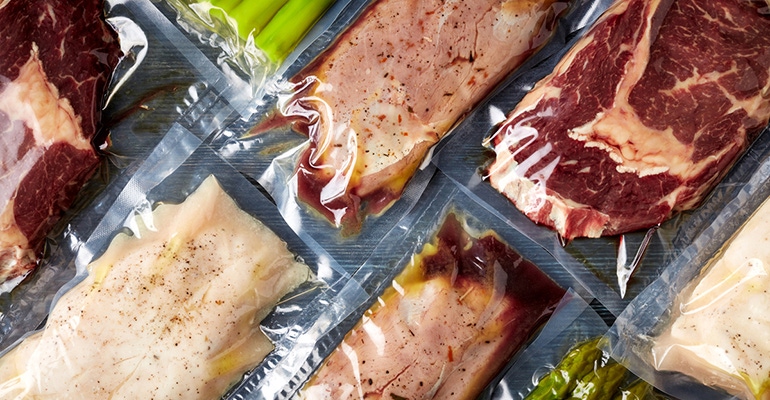Food Packaging Options to Reduce Waste, Boost Sustainability
Four best practices for maximizing the shelf life of plastic-packaged products that minimize the amount of packaging and food waste.

There’s no question that the statistics on global food waste are stark and sobering. A United Nations report released earlier this year found that 17% of food produced globally is wasted yearly, amounting to one billion tons of food waste and accounting for an estimated 8 to 10% of global greenhouse gas (GHG) emissions. And earlier this year, The Washington Post reported the carbon footprint of food waste is greater than that of the airline industry.
At the same time, much of the global conversation around pollution and environmental concerns place the spotlight on plastic packaging, even while the packaging industry is working furiously to address the issue of plastic waste and create the most sustainable future for packaging.
While packaging waste is a challenge that must continue to be addressed, food waste is a crucial environmental consideration of equal concern. Companies should be using a balanced scorecard to ensure they make the best decisions to protect the environment and minimize greenhouse gas (GHG) emissions.
What are some best practices for both maximizing the shelf life of products and minimizing the amount of packaging used? Let's consider the lifecycle of meat and how packaging can maximize freshness.
1. Packaging format matters: Traditional sealed polystyrene trays with cling film offer only minimal shelf life (7 to 10 days) and have some of the highest weights of any meat packaging format. As an alternative, brands should consider other packaging formats that offer lower packaging weight and longer shelf life. For example, vacuum-skin packaging removes almost all the residual oxygen from the package and can triple the shelf life of a meat product.
2. Sealants are game changers: The right sealant can prevent drip loss and keep the packaging looking fresher longer. It can also minimize leaks.
Some of today’s new resins make it possible to produce peelable seals that will work with a wide range of packaging materials including crystallized polyethylene terephthalate (CPET), amorphous polyethylene terephthalate (APET), polypropylene (PP), and polyethylene (PE) rigid containers.
3. Durability is critical: The right mix of stiffness and toughness is essential for protection especially for ecommerce applications. If a meat package is punctured or torn at any point, spoiled products and their negative environmental impact are practically unavoidable.
4. Moisture and vapor barriers are also key: To keep meats and other products fresh, it’s essential to keep out air and moisture. The ability to achieve higher moisture and vapor barrier also creates a selling point for brand owners looking to extend the expiration dates for products like granola, cereals, snacks, and chips.
As we work to create more sustainable packaging, we must take a hard look at how our choices affect shelf life and food waste. The plastics and packaging industries have a unique opportunity to facilitate the shift to alternative packaging formats and designs that will minimize plastic and food waste. These steps will not only improve our products and processes, but also the sustainability of our natural resources.
Michelle Sauder, Dow Marketing Director for Food and Specialty Packaging, joined the company in November 2017. She had worked for Dupont for more than 18 years including her last role there as Marketing Leader – Packaging, North America. After earning a Bachelor of Science degree in Chemical Engineering at Pennsylvania State University, she graduated from University of Delaware - Lerner College of Business and Economics with a Master's Degree in Business Administration. Sauder can be found at LinkedIn.
About the Author(s)
You May Also Like




